For thousands of years, the people of the Middle East have been moving from nomadic lifestyle to settled lifestyle. Cities offer better protection and are centers for learning and exchanging ideas. Why then did so many different groups resist urbanization, and why did they cling to their nomadic lifestyle?
From a nomadic point of view, it is simple. Ancient cities had narrow streets, crowded houses, and very poor sanitary conditions. In cities, one had to pay taxes and serve in a ruler’s army. Camping spots, on the other hand, were open, breezy, and when too contaminated, you could simply move away to a cleaner place.
Therefore, the Nabataeans clung to their pastoral lifestyle, herding sheep, goats, and camels, living in tents, and escaping into the desert when danger was near.
From early times, they also settled in small communities on the outskirts of larger settlements. This can be seen at places such as Selah, across the valley from Busheira, the capital of the Edomites, and at Hegra, 12 kilometers from Dedan, the capital of the Thamuds and Lihynaites in Saudi Arabia. One can assume that they learned their trade as merchants by moving goods from one community to another, and selling them to the citizens of the neighboring city.
Modern parallels of this can be seen today among the Turkomen people who have established tent communities on the outskirts of the major cities of the Middle East. These Turkomen move goods between their communities, and then sell them locally. The Turkomen generally live in tents, and can be readily observed outside of Amman,
Damascus, Beirut, Baghdad, and the cities of Turkey. Today, in the streets of Amman they market goods like Turkish rugs and Iraqi leather coats. Turkomen women and some men tell fortunes and claim to be able to work spells and magic, similar to gypsies, but the Turkomen are not gypsies. Like the gypsies, they are found all over the Middle East, and while they market goods all over the Middle East, they have not entered into the local urban culture, but rather maintain their own language, culture, and nomadic lifestyle.
I see the Turkomen people as a modern day equivalent to the early Nabataeans who quietly established themselves near the major centers of the Middle East, and who moved marketable goods from one community to another. In time, however, their growing wealth, and numbers allowed them to exert more and more influence, until they became a small kingdom in their own right.
But weren’t the Nabataeans Bedouin? While some people consider the Nabataeans to have been Bedouins, there is no proof for this, and at the same time it is hard to define exactly what a Bedouin is. In the rest of this chapter, I would like to consider a number of Bedouin characteristics and compare them with Nabataean lifestyle.
Linguistic Consideration
The Nabataeans spoke an early form of Arabic, and modern Arabic script has been derived from ancient Nabataean cursive. There is no doubt that the Bedouin today have inherited their language from that spoken by the Nabataeans.
As we mentioned in the previous chapter some archeologists have suggested that perhaps the Safaitic and Thamudic inscriptions were really Nabataean inscriptions, and that the ancient Nabataean language was used for official and religious purposes only. They suggest that Safaitic and Thamudic were common dialects spoken and written by the common people. If this is true, then we may know quite a bit more about the Nabataeans than was first thought.
Names
Most Arab tribes have names like beni, or bin something, which means ‘son of.’ A modern example is the famous tribal name Beni Hasan.
This form of tribal name is often found in Palmyra, Safaitic, and Thamudic inscriptions in Northern Arabia. The Nabataean inscriptions however do not include such names. Some have argued that perhaps this is because the Nabataeans were older than this practice, which seems to have developed during the later part of the Nabataean kingdoms by the tribes in the northern desert. On the other hand, it may have been a more slang type term that eventually became the common way to express one’s tribal ancestry.
It is also interesting to note that a good number of Nabataean names are similar or identical to those used by Arabs today. In Nabataean times, a person whose name was derived from the term “servant of…” or “slave of …” some god were very common. From Nabataean inscriptions, we can discover that there were Nabataeans who had names such as Abd’allah. (slave of Allah) The question that arises is, did the Nabataeans influence the Arab Bedouin, or did the Arab tribes of the desert influence the Nabataeans, or were they one and the same?
Lifestyle
The Nabataeans were nomads who lived in tents until they settled and built a kingdom. Bedouin are also nomads and live in tents. It sounds similar, but it may not be so. There are many different groups of people in the Middle East living in tents, and they are not all necessarily Bedouin. Several years ago, I helped gather information for an ethno-linguistic survey in parts of the Middle East. During the survey, I discovered that the nomads of the Middle East included Turkomen, Gypsies (Dom and Zot), Felahine (farmers), and Bedouin. While these people may all live in tents, they each had very different cultural values and language.
During the time of the Nabataeans, many groups of people lived in tents and moved in the desert. Some of these were Arabs, and some may have been from Asian roots, like the Middle Eastern gypsies of today. It is possible that the Nabataeans were nomads in Arabia, but their roots may have come from elsewhere.
The Nabataeans were also known as camel breeders. Before the camel was domesticated, long-distant trade over land was not very developed. Very early trade was carried out by trains of donkeys. The camel, however, could carry much more than the donkey and soon camel trains became more common. In time, someone developed the camel saddle, a construction that sat on the hump of the camel, and allowed the rider to not only ride more comfortably, but also allowed for large bags and sacks to be attached to the sides of the camel. Was this a Nabataean invention? Camel saddles and bags appear on some Nabataean coins and some archeologists have suggested that it was the invention of the camel saddle that gave the Nabataeans an edge in the fierce trade competition.
Cultural Values
Some historians seem to make a large issue out of the Nabataean custom of avoiding wine. However, prior to the rise of Islam, there were a number of groups in the desert that avoided wine. Groups such as the Rechabites of Israel, the Mandaeans of Iraq, and the Nazarites of Judah all had a reputation for avoiding products of the grape, despite the fact that their religious metaphors are filled with references to wine and grapes. The Nazarite concept also included not cutting one’s hair. Nazarite vows are first mentioned in the Bible as having been a part of the Old Testament law as laid down by Moses. (Numbers 6:1-3) This ancient tradition made specific mention that those taking the Nazarite vow had to abstain from wine.
Another Biblical group that abstained from wine was the ancient Rechabites mentioned in the Bible in Jeremiah 35. The Rechabites were a nomadic people who fled to Judah in 586 BC when King Nebuchadnezzar began his conquest of the Middle East. The Rechabites had prohibitions against agriculture, wine drinking, and living in houses. The Bible tells us that this was because of a vow that was taken by their ancestors, who were nomadic in lifestyle.
Diodorus Siculus, who wrote Bibliotheca Historica (60-57 BC), tells us this about the Nabataeans: “They have a law neither to sow corn nor to plant any fruit-bearing plant, nor to use wine, nor to build a house.”
The Nabataean law went as far as making drinking wine an offence punishable by death. For many centuries, the grape did not figure in Nabataean art, especially in the Negev, but in later buildings at Khirbet Et-Tannur it began to appear. Apparently, as the Nabataeans became a world class power in their own right, they began to dabble in the practice of drinking wine; perhaps it came about because they left their nomadic lifestyle.
Strabo adds: “Their leader holds many drinking-bouts in magnificent style, but no one drinks more than eleven cupfuls, each time using a different golden cup” Of course, there is no mention here if the liquid they drank was wine or not.
However, wine drinking apparently really took hold, for during the Byzantine period in the Negev, five winepresses and two wine cellars were found at Oboda. At least three have been found at Sobata, and one at Elusa. Along with this, several of the Nessana papyri deal with the cultivation of grapes. At this time, Christianity was gaining a hold on the Nabataean people, and the old stigma about wine was started loosing influence.
It seems that while the Nabataeans started out refraining from wine, after several centuries wine became a way of life for them. On the other hand, many Arabs drank wine until the Muslim religion imposed a restriction on wine and other forms of alcohol. It seems that the practice of drinking or not drinking wine is not going to help us determine if the Nabataeans can be classified as Bedouin.
Bedouin View of Settled Society
For many centuries, there has been an air of distrust between the nomads of the Middle East and settled people. Nomads appreciate their freedom and ability to move. Settled people require a structure in order to maintain their way of life. As nomads interact with settled people, they tend to get entangled in the structure and eventually are forced to settle. Because of this, nomads have long felt a distrust and wariness of settled people.
Along with this, most of the nomads I know hate dealing with shopkeepers and landowners. Nomads usually work at animal husbandry and sometimes at foraging. Merchants and landowners buy goods produced by the nomads, and the merchant usually controls the price. Even to this very day, there is a tremendous distrust between nomadic Bedouin and city merchants.
Now consider the Nabataeans. The Nabataeans were skilled merchants. They not only traded in a large number of goods, but they monopolized many areas of essential trade in the ancient Near East. This fact alone would isolate them from the typical nomadic Bedouin who made his life solely by animal husbandry.
The Nabataeans were nomads who were merchants. This alone made them unique. They would not have fit into the typical urban scene nor would they have fit into the nomadic school of thought. The Nabataeans would have been isolated in the middle, for they were both nomads and merchants, a unique blend in the Middle East, even to this day. As far as I know, only the modern day Turkomen play a similar role in society.
Diodorus Siculus clearly gives us the reason why the Nabataeans lived in tents. He says, “*…they hold this because they judge that those who possess … things will be easily compelled by powerful men to do what is ordered them because of their enjoyment of these things. Some of them keep camels, others sheep, pasturing them over the desert.*”
Honor and Shame
Throughout this book, I have linked the Nabataeans to many eastern practices and thoughts. Many of their religious practices were adopted from Persia and India. Much of their cultural roots can be traced back to Bedouin and/or Persian background.
Having done this, we need to come to grips with what it means to have an eastern mindset. When one understands the eastern mindset, one can understand what powerful forces drove the Nabataeans, and motivated them to do what they did.
One of the greatest differences between eastern and western mindset is the role that fear, shame, and guilt play. In the west, early rulers generally used fear as the principal method of controlling society. A king might use military might and fear to control his empire. Priests and shamans played on people’s fear of the unknown. Since the people did not understand nature, they often lived in a world of fear. Early religions were systems of appeasement, used to placate the role that gods would have in controlling the forces of nature, emotion (such as love), and even in military battles. In many instances, people also feared the spirits of the departed, and various forms of ancestor worship developed.
However, beginning with the Greeks, and expressed more fully in Roman thought, the concept of guilt as a controlling factor in society became more prominent. The Romans developed the ‘pax Romana’ or Roman peace, where peace was brought about by everyone submitting to Roman law. The Roman illustration for this was the fasces. This fasces was a bundle of wooden sticks, fixed to a wooden pole, with an ax at the top or side. This symbolized the unification of the people under a single government. The ax suggested what would happen to anyone who did not obey the government. The Roman fasces is the origin of the modern word fascism. In this, they combined the use of fear and guilt, expressed through the development of Roman law, as a way of controlling society. As the Romans developed their set of laws, everyone, even the emperor was supposed to obey. People began to live within the limits of the law, rather than in fear of the ruler. This system became more prominent during the Byzantine system of governing people, and it is the basis of law and order in most western societies today. We obey laws, not because we fear a policeman, but because we do not want to be guilty. While fear still plays a role, it is not the primary motivating factor in most western people’s lives. The Romans understood fear and guilt, and thus they repeatedly called the Arab rulers kings and tyrants.
In the east, however, society was not, and is not, controlled by fear or guilt. The controlling factor in most eastern thinking is shame. Most eastern people’s lives are tightly bound together with family. To shame one’s family, tribe or nation is possibly the most dreaded thing most easterners could imagine. The opposite of shame is honor, and so most easterners work towards gaining honor for themselves, their family, tribe, and nation. Consequently, easterners can argue with a policeman, and even argue with a judge. The law is not necessarily seen as the highest authority in society, but rather the law is a guideline of how people should act. Breaking the law is simply going against the wishes of society, and not the ultimate evil. Being caught in the position of shame, or bringing shame upon those you love is far worse than breaking a law. In this, Arab, Persian, and Indian societies are very similar.
Dr. Sania Hamady, an Arab scholar and one of the greatest authorities on Arab psychology, tells us that Arab society is a shame-based society. “There are three basic fundamentals of Arab society,” she states, “shame, honor, and revenge.” Shame is covered as much as possible, but when it cannot be hidden, it must be revenged. Other eastern cultures react differently to shame. In some eastern cultures, when a person is caught in a position of shame he simply commits suicide to preserve the honor of the family.
A great deal can be said about this, and much has been written on this subject in the last few years. While we cannot belabor the topic here, much as I would like to, it is important for us to realize that the Nabataean culture operated within the shame - honor paradigm. These two items continue to factor greatly in the nomadic worldview even today. Nabataean eastern heritage and the heritage of those they traded with in the east, operated on a system of shame and honor.
In the west, however, the Greek and Roman civilizations were moving increasingly to operating on the basis of guilt versus innocence. The Romans were not only developing laws, but they developed a whole legal system of lawyers, courts, and judges, similar to what we have today in the west. The whole purpose of this complex legal system was to be able to prove innocence or guilt.
Nabataeans in Middle Eastern Society
Against this background, let us consider the place that Nabataeans held in the eyes of eastern society. First, they were merchants. In the Bedouin world, merchants were not to be trusted. The relationship between the nomads of the desert and those who bought and sold was very tentative. Today in America, many consider used car salesmen or door to door salesmen with distrust and even disgust. In this, the Nabataeans were the ancient version of modern day salesmen who talk big, tell lies, and exaggerate in order to make a sale and make a profit at the expense of the buyer. Strabo aptly described the Nabataeans as hucksters.
Second, the Nabataeans were known as pirates and thieves who plundered traders both on the high seas and in the desert. This surely did not make them popular with anyone.
Third, as we mentioned in the end of the first chapter of this book, the Nabataeans were involved in the skin trade, providing prostitutes to the Romans and wealthy people of their day. All down through history, those who profited from exploiting women have been looked upon with disgust.
Fourth, the Nabataeans had a reputation for fleeing from battle if the battle turned against them. Strabo and others ridiculed them for this shameful behavior.
Fifth, the Nabataeans were quick to adopt new ideas and practices. For the eastern mindset, failure to conform to the status quo is damning and leads to a place of shame in the community. This is often hard for Westerners to understand. We in the west value our individualism, but eastern society usually values conformity. A modern example of this is found in the religion of Islam. The very meaning of Islam is to conform to the point of submission. The very object of public prayers and universal fasting is to bring conformity on all. There is an Arab proverb that can be translated “Innovation is the root of all evil.” If one fails to conform, he is initially criticized, and, if he continues to refuse to conform, is put in a place of shame by the community.
Contrary to this, the Nabataeans were risk takers. They traveled where others did not, and adopted new ideas. The possibility of failure in some way can fill an easterner with dread, as failure leads to shame. The Nabataeans, however, experimented with new techniques and technology.
From this we can assume that the Nabataeans were held in disrespect by the societies around them, and so they were free to experiment and adopt, as they were already deemed failures and misfits by both the eastern Bedouin society and the western Greeks and Romans.



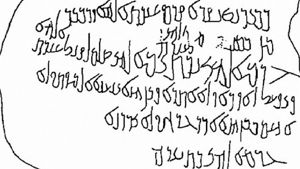

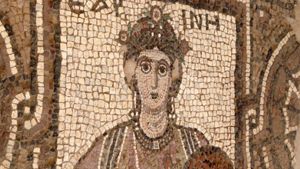

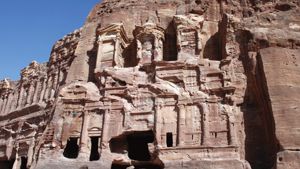
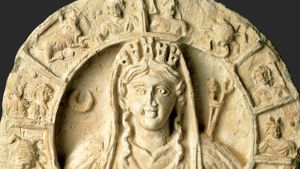
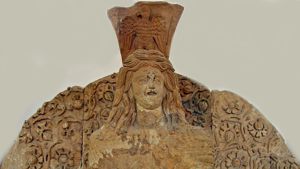
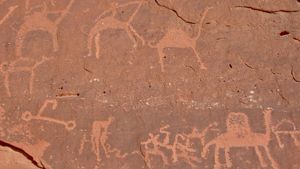
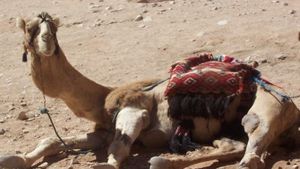
Page Discussion
Membership is required to comment. Membership is free of charge and available to everyone over the age of 16. Just click SignUp, or make a comment below. You will need a user name and a password. The system will automatically send a code to your email address. It should arrive in a few minutes. Enter the code, and you are finished.
Members who post adverts or use inappropriate language or make disrespectful comments will have their membership removed and be barred from the site. By becoming a member you agree to our Terms of Use and our Privacy, Cookies & Ad Policies. Remember that we will never, under any circumstances, sell or give your email address or private information to anyone unless required by law. Please keep your comments on topic. Thanks!